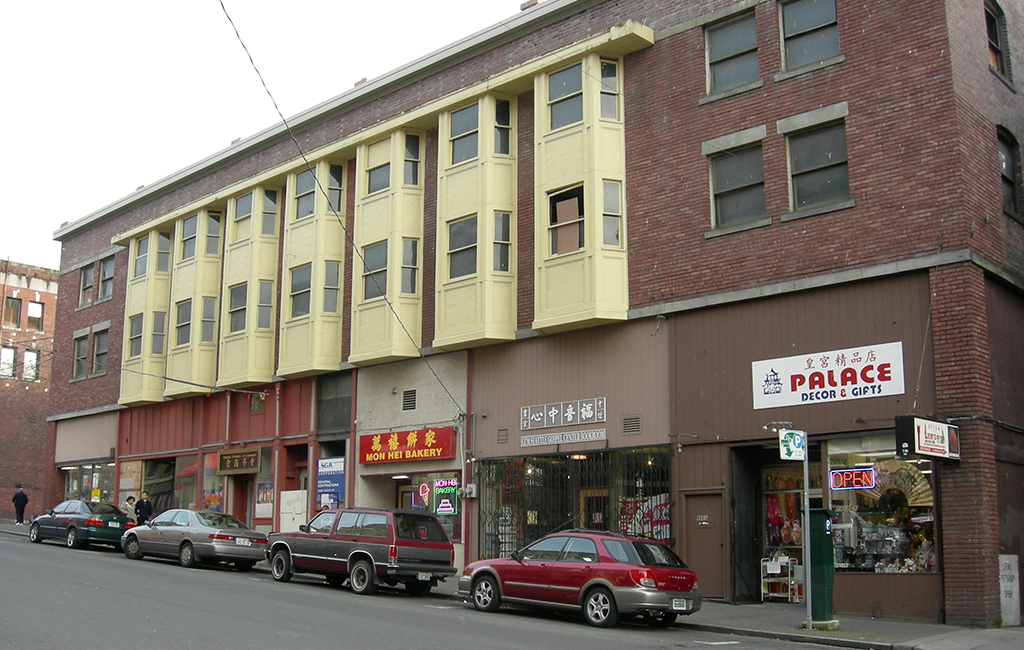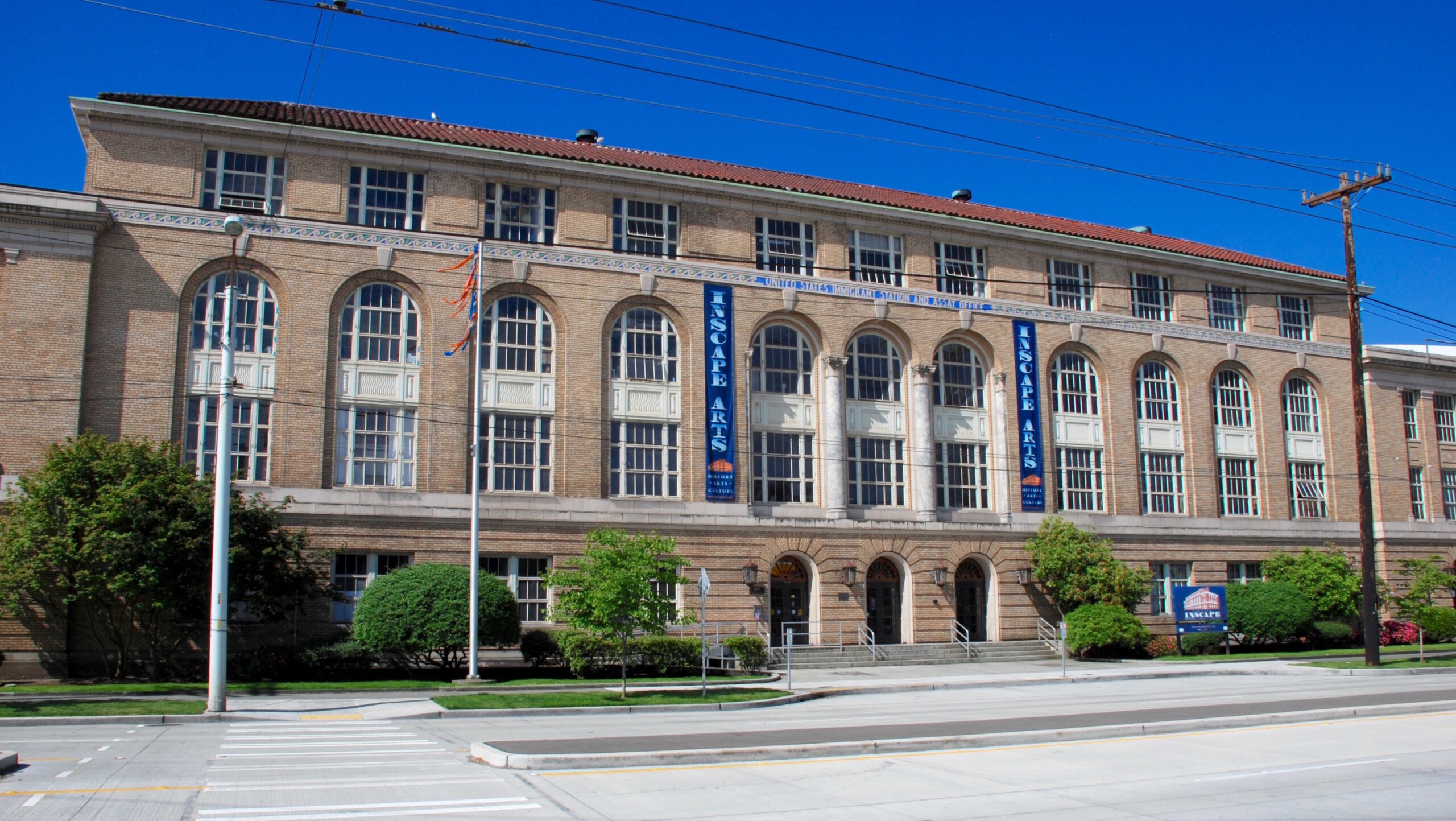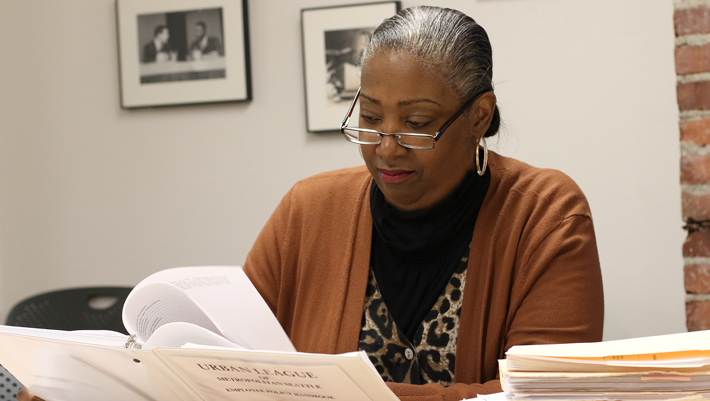 Louisa Hotel Building circa 2008 (Photo: Joe Mabel)
Louisa Hotel Building circa 2008 (Photo: Joe Mabel) Although historic preservation is often perceived as merely a matter of protecting buildings, it is also about honoring Seattle’s history, its myriad cultures, and the people whose lives are entwined with historic districts and buildings. It is no secret that Seattle’s rapid growth and redevelopment has put pressure on communities across the city. This three-part series examines how community members are working within the International Special Review District (ISRD), one of the City’s eight historic districts, to preserve the buildings and the stories that infuse them.
On December 24, 2013, a fire broke out in the western half of the Louisa Hotel in the Chinatown International District. The resulting damage was extensive and led to the demolition of nearly half the building. “Right after the fire, once we got over the shock and the realization that the building wouldn’t be whole for a while, we sat down to try to figure out what our next steps were going to be,” recalled Tanya Woo, whose family owns the Louisa. “Should we rebuild? Do we have the means to do that? Would we just have to shutter it and leave it as is? Would we have to sell it? We decided that we wanted to rebuild.” After making this decision, Woo and her family met repeatedly with their tenants and staff from the Seattle Department of Neighborhoods, Seattle Department of Construction and Inspections, and the Office of Economic Development to talk about strategies and resources for short- and long-term stabilization.
Built in 1909, the Hudson Hotel, the three-story brick building now known as the Louisa, was a single-room occupancy hotel. Home to immigrant men from China, Japan, and the Philippines who had come to find work in the region, the building also housed the first Chinese bakery in Seattle, the first Chinese seafood restaurant, a casino, and a Prohibition-era speakeasy.

Tanya Woo
The rich texture of the Louisa’s history is, for Woo, part of what makes the building so special. “There isn’t one set story that is my favorite. It’s the discovery of many stories and how they’re interwoven inside the building,” she noted. As the restoration work has progressed, Woo has had the chance to connect with these stories by encountering artifacts that belonged to the people who lived there. “Walking through the bathrooms that they shared, we find the personal effects that they left behind,” Woo said. “We saw decorations in some of the rooms. Sometimes we discover things like perfume bottles in walls and coins in floorboards. It’s all the possibilities and it’s fascinating to think about all the people who came through.”
“Going into the Louisa, walking through its halls and seeing murals and how it was built, there’s a rich sense of history that we wanted to convey to the future generations. People sacrificed so much to come here, and they worked so hard, we should honor that.”
Woo’s commitment to the history of the Louisa and Chinatown has deep roots. “My dad bought this building in the 1960s. He was very involved with Chinatown. He loved Chinatown. My great-grandfather was one of the founding members of the Luck Ngi Musical Association. So, my family has a long history here in Chinatown and they taught me to really appreciate the community and give back,” Woo said. “They also taught me respect for tradition and honoring those who came before us. Going into the Louisa, walking through its halls and seeing murals and how it was built, there’s a rich sense of history that we wanted to convey to the future generations. People sacrificed so much to come here, and they worked so hard, we should honor that.”

Prohibition-era mural found in the Louisa Hotel
Since the Louisa is situated within the International Special Review District (ISRD) – one of the City’s eight historic districts – Woo and her family are required to follow the design guidelines and land use standards that were established to preserve the District’s historic buildings and unique Asian American character. “I really believe in the current design guidelines that are in place. I believe that they help protect the characteristics of Chinatown,” said Woo. “From the very beginning, we knew we had to replicate what we lost to the fire and from demolition.” The extensive renovation and remodeling work necessitated by the fire meant working with the ISRD Board for approvals which, in turn, enabled the Woos to apply for city and federal tax incentives that encourage property owners to preserve historic buildings. For Tanya and her family, the effort to restore the Louisa has required careful attention to details such as working to replicate the original brickwork that was lost as a result of the fire. “It took a lot of meetings to figure out that we’d have to combine three different kinds of brick to imitate the brick that used to be there,” she recalled. “I think that, without the approval process, we wouldn’t have had to try so hard and I’m very happy with what we came to.”
“The ISRD board has a huge hand in the preservation of this district, they’re very important, detail-oriented, and meticulous. I love that. I love how they work really hard at preserving the history of this district and making sure that everyone’s represented.”
With construction on the Louisa underway and the new workforce housing and retail space expected to be complete next spring, Woo is excited about the future of the building and its place within the Chinatown International District. “With all the renovations that are happening in this area, I see more people coming into this district. I see a very vibrant Chinatown,” Woo said. “I see a lot more community involvement. I feel like there’s a lot of interest in upgrading all of our buildings here and a lot of interest in preserving the district. The ISRD board has a huge hand in the preservation of this district, they’re very important, detail-oriented, and meticulous. I love that. I love how they work really hard at preserving the history of this district and making sure that everyone’s represented. I know that without them Chinatown wouldn’t be what it is today.”

Rolluda Architects rendering of the Louisa Hotel renovation


